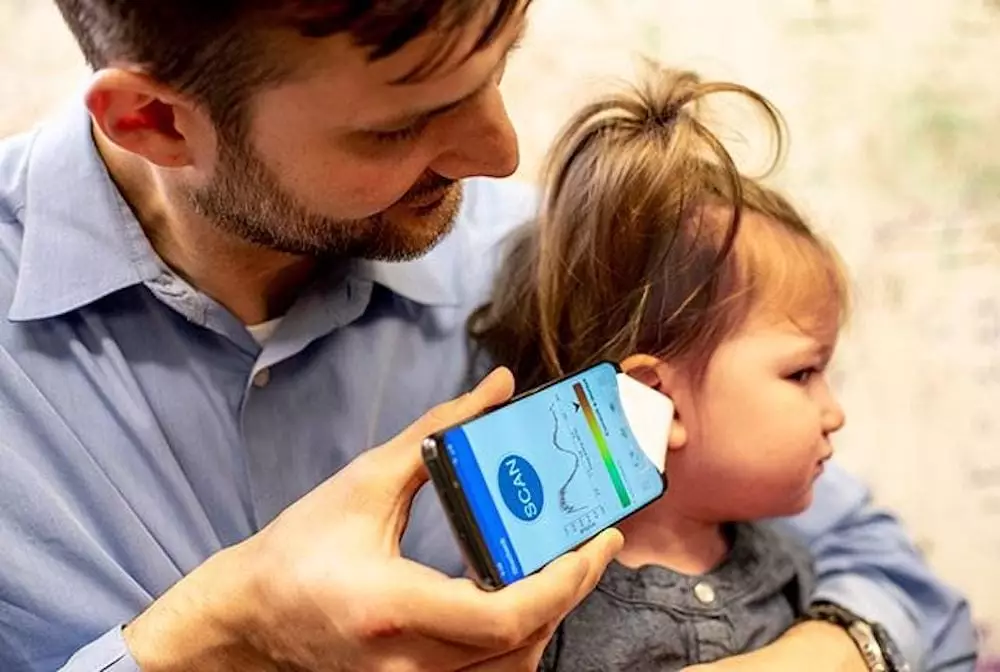Ear infections have long been a source of concern for parents with young children. The classic scenario is all too familiar: a child becomes fussy, starts pulling at their ears, and the concerned parent rushes to the pediatrician, only to find that the child doesn’t have an infection after all. This situation begs the question—what if there was a more efficient way to discern whether a child truly has an ear infection, potentially saving parents from unnecessary visits? Recent advancements in technology may provide a solution.
Researchers at the University of Washington have developed an innovative approach to ear infection detection that leverages machine learning and a smartphone app. This new method aims to detect the presence of fluid behind the eardrum, which is a significant factor in diagnosing infections. By utilizing a simple piece of paper fashioned into a funnel attached to a smartphone speaker, parents can perform the test themselves at home. The funnel plays a tone, and based on the sound that reflects back, the app can determine whether fluid is present in the ear.
This technique is intriguing as it transforms an aspect of healthcare that is typically reserved for medical professionals into a process that can be performed at home. The algorithm employed in the app relies on detecting variations in sound, much like the way one can discern the different notes produced by tapping a wine glass filled with varying amounts of liquid.
The efficacy of this technology is supported by research conducted on a small cohort of children. During their study, the researchers tested the application on 15 children aged between 9 and 18 months, during which they were able to accurately identify ear fluid in most cases. They also observed parents using the method and noted that their accuracy was comparable to that of trained medical professionals. This revelation suggests that the app could be a viable tool for parents who want to assess their child’s ear health without rushing to the clinic.
Nonetheless, it’s important to consider the study’s scope. While the preliminary results are promising, the research was conducted with a limited number of participants, and further studies on larger and more diverse populations will be necessary to validate its reliability.
Implications for Parents and Healthcare Providers
The potential introduction of this technology could revolutionize how parents approach ear health management. It empowers parents with valuable information at their fingertips, allowing them to make informed decisions about their child’s wellbeing. For instance, if detected fluid indicates a visit to the pediatrician is necessary, parents can arm themselves with relevant data, which could lead to more targeted and effective consultations.
However, skepticism remains about how soon this technology will be integrated into everyday medical practice. Many healthcare providers may require more substantial evidence of efficacy before endorsing such a tool. Even if the app demonstrates reliable results, it could take time for it to gain acceptance in the medical community.
Proceeding with Caution
In the meantime, while the prospect of at-home ear infection diagnostics is enticing, parents should not disregard traditional medical advice. Symptoms such as persistent fussiness, difficulty sleeping, or fluid discharge warrant a visit to the pediatrician regardless of the app’s findings. Organizations like the Mayo Clinic recommend contacting a doctor if symptoms last more than a day, particularly for children under six months.
While the convenience of a smartphone app to detect ear infections is compelling, balancing technological advancement with established medical guidance is essential. As the research progresses and we await further developments in this domain, parents can remain hopeful that tools such as this may not only reduce anxiety but also enhance children’s healthcare experiences in the future.

